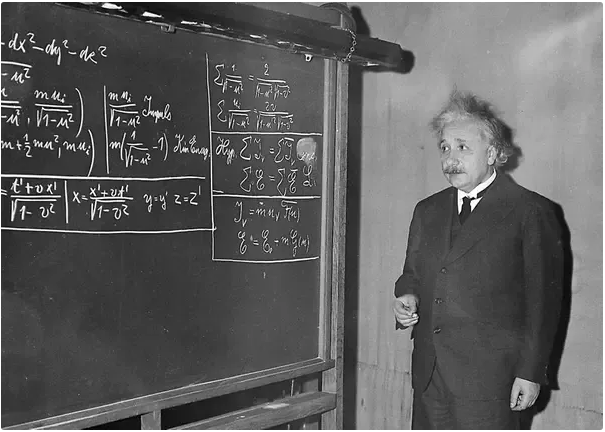Major Physics Breakthrough Advances Einstein's Nobel Winning Photoelectric Effect

When Einstein was awarded the Nobel Prize in Physics in 1921, he was immediately thrown in to the spotlight of the scientific world, and which has stayed on him for nearly 100 years.
He won it for his work in theoretical Physics, primarily for explaining the problem known as ‘the photoelectric effect.’
This problem had been plaguing scientists since 1887, until the frizzy haired and eccentric genius we’ve all grown to love came along.
The landmark work he did in 1905 explained a very fundamental physics effect. His work on the quantification of light paved way for all further research on quantum theory. It is safe to say that his formulae have influenced every major scientific discovery since.
Even after 112 years since Einstein's explanation of the photoelectric effect, the process still holds a few mysteries. Photoemission is the emission of an electron from the surface of a material when light falls on it.
A report published in the journal Science, adds an interesting spin to the subject. Physicists from Bielefeld University (Germany) co-operated with colleagues at the Donostia International Physics Center and the University of the Basque Country in San Sebastian (Spain), determined that when ultra short pulses of light were used to emit electrons from the surface of a material, the electron emitted first, exited the atom last.
Scientists have understood the science behind this weird principle, where the electron with the head start in the race to exit the atom, eventually ends up coming last.
Electrons are always emitted in order and not all at once. The order of emission depends on which energy level they belong to within the atom.
Until now, common sense dictated that the electrons that are emitted first tend to exit the atom first. But, new findings have completely turned this simple physics principle on its head.
The thing with these electrons emitted first is that they tend to be strongly affected by the interaction within the atom while the process is happening.
These emitted electrons get trapped within the perimeter of the atom, and are confined around the nucleus in what is being termed an intra-atomic "dance."
Researchers found that the electron fastest to get knocked off gets trapped in the atom for the longest period of time. They are bound dynamically by the centrifugal barrier between the atoms, which make it spin around its parent nucleus for a tad bit longer than necessary.
Once the intra-atomic forces were balanced by the first few electrons emitted, the rest left the atom as soon as they were emitted and hence "won" the race despite not being the first electrons to get ejected.
This observation has now revised the century old photoelectric emission effect, and the intra-atomic interaction discovered has now to be taken into account in the study of sub-atomic particles.
When scientists used a Tungsten Diselenide as the emitting material during the laser spectroscopy, they saw the effect clearly. The material has a very stable outer surface and it ensured that the electrons remained "dancing" for longer around the nucleus.
On an atomic scale, this, makes a big difference as the time between two emissions is more clearly visible.
Observing them with an attosecond spectroscopy resolution compared to the usual femtosecond spectroscopy resolution helps us study these minute interactions happening on a nano scale very clearly.
The material also provides four photoelectron emission channels with markedly different initial state properties. This makes each emission very different from the others, hence blocking emissions more effectively for some and letting others pass freely, giving us a clearer view of this effect.
When the process was modeled quantitatively, with the help of the researchers from Spain, they were able to determine that the initial orbiting motion could not be neglected, but should be taken into account to figure out the order of emission. This is because when the dynamics of the electrons are studied, this force plays a direct role and cannot be neglected or overlooked.
Attosecond spectroscopy now directly addresses the fundamentals of the interaction of light with matter. Viewing these interactions under this resolution ensures that every minute difference in emission is captured during the spectroscopy. Improving our understanding of the minute interactions on an intra-atom scale will help future experiments resolve light-fields to a sub-atomic level that was not possible until now.
© Copyright IBTimes 2024. All rights reserved.





















